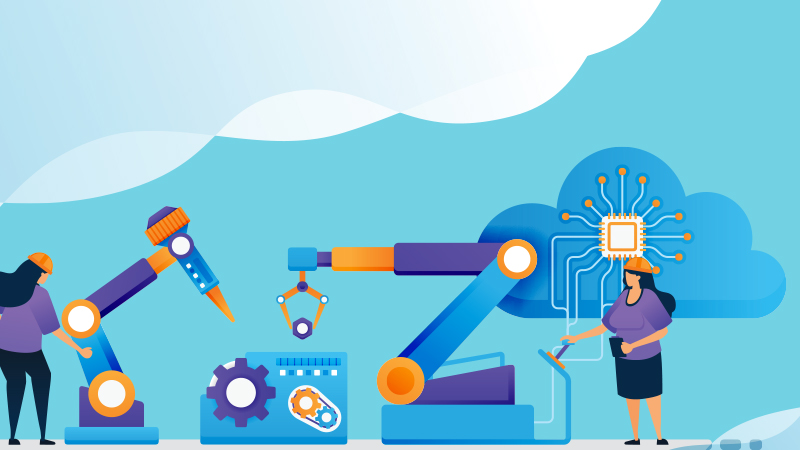The global robot market is tens of billions of dollars, and it is growing many times faster than the global economy. Sberbank analysts assessed the main directions and trends of its development
“You have to run as fast just to stay in the same place, and to get to another place you need to run twice as fast.” This quote from Alice Through the Looking Glass by Lewis Carroll very well describes the speed of technological progress in our time, Sberbank analysts note in a 2019 robotics review.

Every year, Sberbank Robotics Laboratory prepares an analytical review of the global robotics market, and since the previous publication in April 2018, significant events have taken place in the industry. Some manufacturers appeared, while others ceased to exist; investments in start-ups have reached the maximum level; there have been several major mergers and acquisitions; some niches of this market have approached saturation – and all this in a little more than a year.
In accordance with the standards of the International Federation of Robotics, the authors of the report divide robots into two families: created for industry and for the service sector. True, due to the mutual penetration of technologies, such a rigid division is rapidly becoming obsolete, the study says.
In addition, Sberbank analysts emphasize that over the 100 years of the existence of the term, there has never been a universal concept of what a robot is. They offer their own, functional set of criteria, which they call the STA-definition:
- sensation (sense) – the ability to perceive the world around with the help of sensors;
- thought (think) – the ability to interpret signals received through sensors;
- action (act) – the ability to influence the physical world in any effective way.
A clear definition of the term “robot” is also necessary for legislators and lawyers – rapid automation raises the question of the social consequences of such changes in the near future, which leads us to the problem of positioning a robot as a subject of legal relations.
Industry 4.0
Lawyer Victor Naumov – on the legislative regulation of robotics
Industrial robotics
The technological vector of the post-industrial society is determined by the transition to automated digital production using self-organizing cyber-physical systems. In fact, we are talking about autonomous robots that are successfully replacing human labor in an increasing number of industries.
The latest accurate data on the industrial robots market is for 2017, and this is 381 thousand pieces of equipment. Preliminary estimates for 2018 indicate an increase to 421,000 robots. In the near future, the average annual growth rate will be about 14%, which means that by 2021 there will already be 630 thousand industrial robots in the world.
The cost of these 381,000 robots was about $16.7 billion the year before last, a figure that has doubled in five years. Moreover, this is only hardware, taking into account software, the market value grows to $48 billion in 2017. It is difficult to say what will happen to the value of the entire market in the coming years, because the average cost per device is steadily declining.
Sberbank analysts identify several factors for the explosive growth of the market in recent years:
- increased demand for robots, not least in which the modernization of China’s industry plays;
- the development of 3D printing and other technologies that make the production of robots faster and cheaper;
- growth of investments in the industry: if in 2017 the ten largest transactions were made for $700 million, then in 2018 they were already worth $11.5 billion.
In the coming years, these three factors will remain in force, so there is no need to talk about slowing down growth in the industry yet, the authors of the report are sure.
Economics of innovation
Three myths about replacing humans with robots
Of all industries, about a third of the demand for robotics is provided by the electronics industry and the same amount by the automotive industry, with the latter industry now beginning to give way to the former as the main consumer of robots. The reason is the growing demand for advanced consumer electronics and the need to automate the processes of its creation.
An interesting example is South Korea. The robotization of the electrical industry there has reached saturation, so demand has greatly weakened, and in 2017, sales of robots in the country decreased by 4%. In neighboring China, where large-scale modernization is taking place, the demand for robots increased by 60% in the same year. In general, South Korea now has the highest density of robotization: 710 devices per 10,000 industrial workers. The global average is 85 robots per 10,000 workers. In China, it is 97 robots, in Russia – four.
Of the top 15 countries in the world by the number of industrial robots sold in 2017, eight are located in South and East Asia. The US is only in fourth place. Russia is not included in this rating.
Least of all, robotization is present in shipbuilding, aircraft building, the nuclear industry, mining and agriculture. Just in these industries at the current level of development probotization remains a complex and expensive process. But the same factor leaves room for the coming technological breakthrough here.
Service robotics
The market for robots for the service sector is still half the size of the industrial robotics market: about $8.1 billion in 2018. The number of service robots, according to estimates for 2018, turned out to be three times less than industrial ones – 165 thousand pieces. But the service economy itself, in terms of its contribution to global GDP, is twice as large as industry, so the growth of the robotics industry will occur precisely at the expense of it, the authors of the report are sure.

Moreover, in fact, this is already happening. In 2017, the global economy grew by 3.7%, the industrial robot market grew by 31%, and the service robot market grew by 85%. The average annual growth rate here will be 21% against 14% in industry.
In terms of the number of devices, the absolute leader (over 60%) is the logistics sector. These are autonomous warehouse carts, packers, sorters, couriers and more. A well-known example of such automation is Amazon. A job that requires 1 man-hour can be completed by her warehouse robot in 15 minutes. The operating costs of each Amazon warehouse have been reduced by 20%, saving the company $22 million a year.
